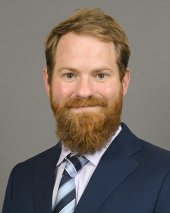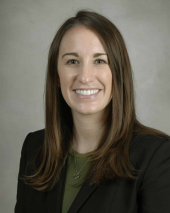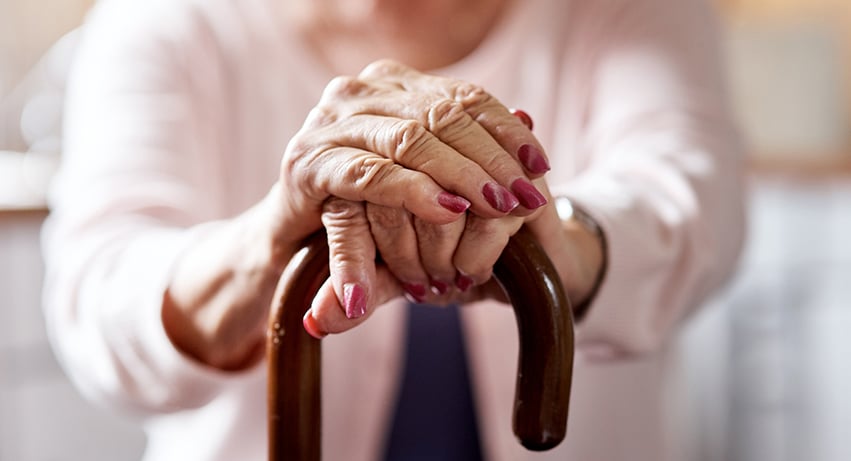Have you noticed how hip fractures commonly occur when an older adult falls? It’s a reality that might be more dangerous than you realize. Fortunately, proactive measures can be taken to help protect bone health and reduce the risk of falls and fractures.

“Hip fractures are one of the most common fractures we see as orthopedic trauma surgeons, and we see them daily,” said Patrick J. Kellam, MD, an orthopedic trauma surgeon at UT Physicians Orthopedics Trauma Clinic and assistant professor with McGovern Medical School at UTHealth Houston. “For example, on a single day this week, five of my 12 cases were hip fractures.”
The No. 1 cause of hip fractures among older adults is falls, Kellam said. These are ground-level falls that occur because of neuropathy (a form of nerve damage that can lead to a loss of feeling in the feet), balance, or walking issues. Potential fall risks within the home, such as carpets with tassels and rooms crowded with furniture make it more challenging to walk without tripping or to use a walker.
Getting the facts on fractures

Statistics relating to hip fractures are sobering. And the reality afterward is just as discouraging. In the United States, roughly 800 older adults a day – or 300,000 people annually – are hospitalized due to a hip fracture, according to the Centers for Disease Control and Prevention. These are people 65 and older. Up to 20% of women and 25% of men die in the first year after breaking a hip, which is why a hip fracture is such a serious health threat.
“While the mortality rate is really high following a hip fracture, what seems to matter to people more is the loss of independence and chronic pain that affect quality of life,” said Christina L. Yazdani, PA-C, bone health specialist at UT Physicians Orthopedics at Memorial Herman | Rockets Orthopedic Hospital.
Yazdani said many people think a hip fracture is normal, and that breaking bones is just something that happens when you get older.
“It might be common, but it’s not normal. Not everybody who’s older has osteoporosis (a disease that weakens bones) and starts breaking bones,” she continued.
Taking proactive measures for bone health
Yazdani suggested several ways to help prevent bone loss.
Nutritional counseling
Nutrition and vitamins are an important aspect to consider as part of blood work. Providers should look for nutritional deficiencies relating to calcium and vitamin D.

Exercise
This is another important component in preventing bone loss. Walking or running are good weight-bearing exercises, but it needs to be paired with muscle strengthening exercises, as well. This can be resistance-type exercise that uses body weight, elastic bands, or light free weights, such as dumbbells or kettlebells. Anything that helps strengthen your muscles will help strengthen your bones, too, Yazdani said.
Bone density scans
These scans are essential for detecting bone loss. Guidelines from the Bone Health and Osteoporosis Foundation recommend women have a bone density scan beginning at age 65 and men at age 70. Yazdani advises having one at an earlier age if risk factors exist, such as a family history of osteoporosis or regularly taking certain medications that may cause bone loss.
Women’s bones deteriorate at a faster rate than men, which is why more women have hip fractures.
“Most women lose 10% – 12% of their overall bone density within five years of menopause,” Yazdani said. “I tell all women, whatever age you start going through menopause, get a bone density scan.”
Medication
While not for everyone, medication is another option for preventing and treating bone loss. Although there’s no cure for osteoporosis, Yazdani said there are medications available to help prevent it or to slow or stop the progression.
Tips to reduce your risk of falling
Yazdani offered three tips to help reduce the risk of falling:
1. Create a safe environment.
Most fractures happen in the home. Pick up throw rugs, move pots and pans to an easy-to-reach area in the kitchen, install guardrails and grab bars in the shower and tub, and add nightlights to illuminate the path during nighttime trips to the bathroom.
2. Manage other health conditions.
Make sure you’re being monitored for other health issues. A change in blood pressure, for example, could cause you to become dizzy and might lead to a fall. Low blood sugar can cause passing out and falling if diabetes isn’t controlled.
3. Ensure vision and hearing are up-to-date.
Have your eyes checked. Wear proper eyewear if you need glasses or contacts. There’s a link between hearing loss and balance issues, which could lead to a fall. Get tested to determine if you need hearing aids.
Benefits of a bone health clinic
UTHealth Houston’s bone health clinic is a unique component within the UT Physicians orthopedics department. This bone health program treats men and women at high risk for having fragility fractures. Yazdani is one of several providers who focus exclusively on bone health. Patients are often referred from primary care physicians or gynecologists, which allows patients to have a whole appointment devoted to their bone health.
Many times, adults in their 40s and 50s accompany their parents to an appointment with Yazdani following a fracture, realize they should be looking at their own bone health, and start proactive measures to avoid a bone crisis like their parents. It becomes a family affair.



